Slow Growing Mulberry Trees Are Well Worth The Effort – Here’s How To Grow Them

FRUIT > MULBERRY

Elizabeth is a Permaculture Garden Designer, Sustainability Consultant and Professional Writer, working as an advocate for positive change. She graduated from the University of St. Andrews with an MA in English and Philosophy and obtained a Diploma in Applied Permaculture Design from the Permaculture Association.
Reviewed By COLIN SKELLY

Colin is a Horticulturist and Horticultural Consultant with experience in a range of practical and managerial roles across heritage, commercial and public horticulture. He holds the Royal Horticultural Society’s Master of Horticulture award and has a particular interest in horticultural ecology and naturalistic planting for habitat and climate resilience.
Contributions From HUMAIRA IKRAM

The founder of Studio Ikram, Humaira has worked as a professional Garden Designer for over 10 years. She also runs a Garden Design course at KLC School of Design and is a Garden Adviser to the RHS. Humaira regularly contributes to BBC Gardener’s Question Time and has also featured on flower shows across Netflix and the BBC.
IN THIS GUIDE
MULBERRY GUIDES
Mulberry trees are an interesting fruit tree to consider if you are looking for something beyond the ordinary apples, plums, cherries and pears commonly grown in UK gardens.
“I love mulberry trees,” Humaira Ikram, a Garden Designer, simply states.
“At the moment my mulberry is fruiting so I stand under it every day and pick the berries straight off. They don’t make it to the kitchen. For me, it gives me so much pleasure that I can go out into my garden and do that.”
Mulberries are not a fruit that many of us have had the opportunity to try.
They are fragile and difficult to process and transport so are not really grown commercially.
You will have to have some patience if you would like to grow them in your own garden since from the time of planting, they can take 8-9 years or longer to bear fruit – even in an ideal location.
However, these are beautiful trees, and the rewards are well worth the effort once they do finally arrive.
This is a slow-growing tree which is very ornamental, so even before its fruits appear it can still be a valuable addition to a garden.
Overview
| Botanical Name | Morus nigra |
| Common Name(s) | Black Mulberry |
| Plant Type | Fruit Tree |
| Native Area | South-West Asia |
| Hardiness Rating | H6 |
| Foliage | Deciduous |
| Flowers | Inconspicuous |
| When To Plant | November-March |
| Harvesting Months | August-September |
| When To Prune | November-December |
Sunlight
Preferred
Full Sun
Exposure
Sheltered
Size
Height
8 – 12M
Spread
8 – 15M
Bloom Time
Summer
Soil
Preferred
Most fertile soils
Moisture
Moist but well-drained
pH
Any
“I plant Mulberries every bit as much as ornamentals as for their fruit,” shares Master Horticulturist Colin Skelly.
“I’m particularly taken with training them as a flat canopy over an outdoor patio area where they can provide summer shade.
“The particular species for this is not Black Mulberry but Morus alba ‘Platanifolia’, a fruitless Mulberry (essential for not staining what’s underneath them).”
Morus nigra, the ‘Black Mulberry’, hails from southwestern Asia and the Iberian peninsula, though it has been cultivated for so long in these regions that its precise original range remains obscure.1Datiles, M. J., & Acevedo-Rodríguez, P. (2015). Morus nigra (black mulberry). CABI Compendium. https://doi.org/10.1079/cabicompendium.34830
It is a deciduous tree, which can ultimately grow up to around 12m tall and 15m wide.
More commonly, however, it is much smaller, and even shrub-like here in the UK.
These trees bear edible fruit, compound clusters of several small droops which are deep purple, almost black in hue when fully ripe.
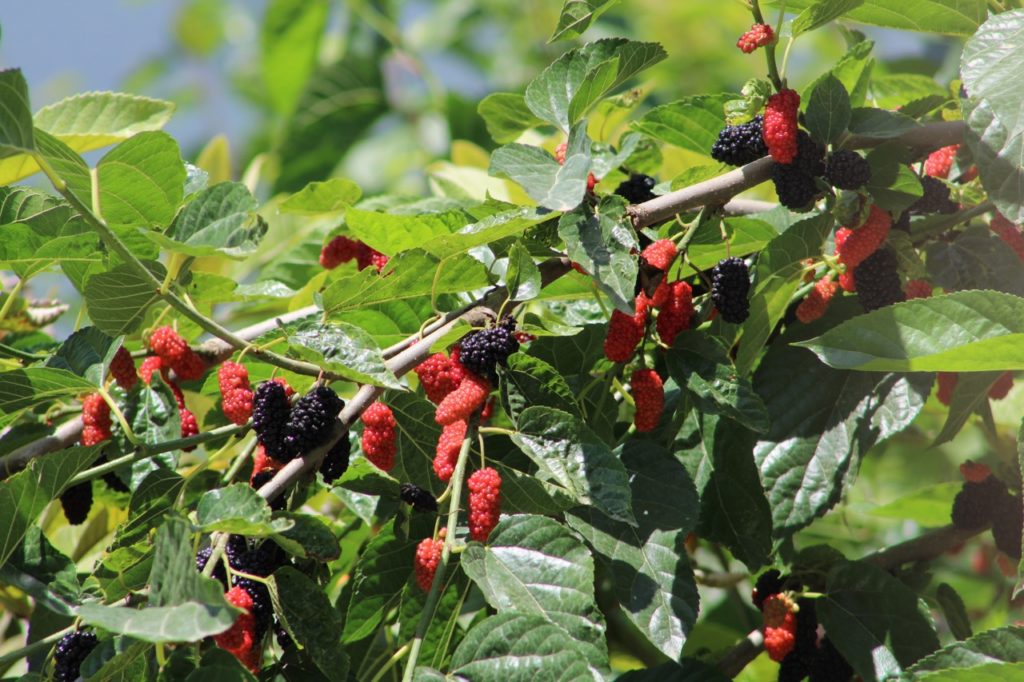
These berries have a delicious, slightly tart flavour, yet they can be eaten raw, as well as cooked and used in a range of recipes or in preserves.2Morus nigra Black Mulberry. (n.d.). Plants for a Future. Retrieved March 21, 2023, from https://pfaf.org/user/plant.aspx?latinname=Morus+nigra
Morus nigra should not be confused with other Morus species, such as the white mulberry and the red mulberry – M. alba and M. rubra respectively.
M. alba is somewhat less hardy than M. nigra and the fruits are said to be inferior, though this can also be an attractive tree for gardeners.
M. rubra, the American mulberry, is not commonly grown here.
Common Varieties
There are a number of named cultivars of black mulberry to consider growing in the UK including these most popular:
- M. nigra ‘Black Beauty’
- M. nigra ‘King James’
- M. nigra ‘Jerusalem’
- M. nigra ‘Kaester’
- M. nigra ‘Wellington’
How To Grow Mulberries
Mulberries are usually purchased as bare-root plants and planted over the dormant period.

Care must be taken since mulberry roots are brittle and do not always take well to transplantation.
If you know an existing mulberry tree, cuttings can also be taken as a means of growing a new tree in your garden.
Propagation
Hardwood cuttings can be taken in the autumn and placed into pots of a free-draining yet moist growing medium, with a cloche (e.g. plastic bottle) over the top to conserve transpiration.
Not all cuttings of M. nigra will be successful, so taking multiple cuttings will improve the chances of success.
Dipping roots in cinnamon or honey (natural fungicides), and using willow water or other rooting hormones can improve your chances of rooting successfully.
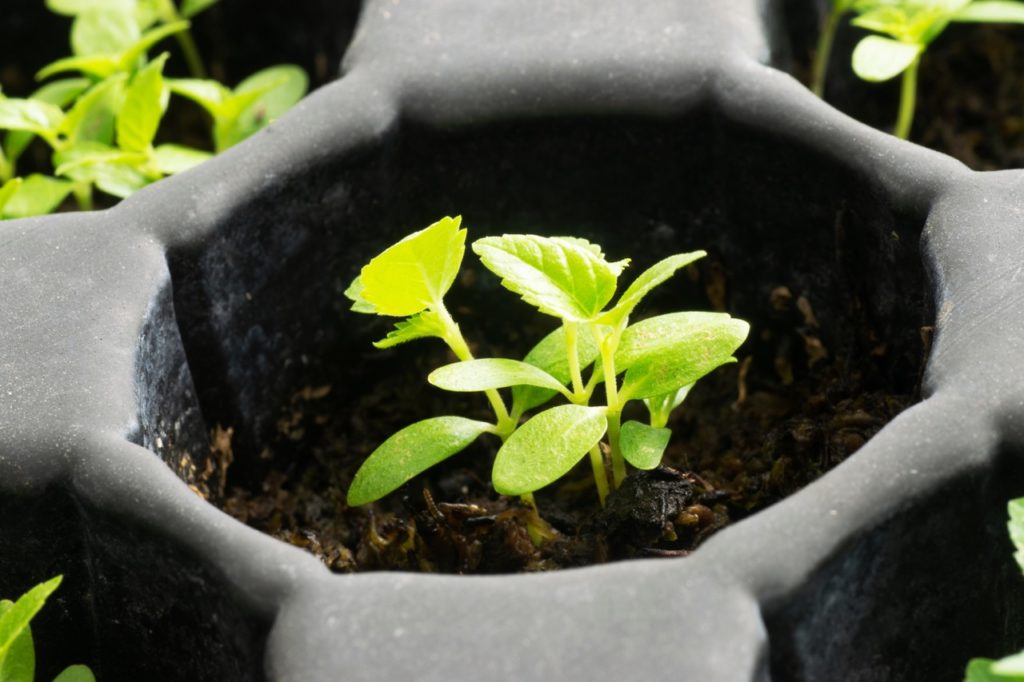
Keep the cuttings covered, gradually increasing airflow, and keep them out of direct sunlight.
One other old method for rooting M. nigra involves laying a 2-3ft long dormant cutting in a shallow trench.
Cover all but the tip (5-10cm) with soil.
Black mulberry is the most difficult mulberry to propagate from hardwood cuttings, but you may have success if you try one of these techniques.
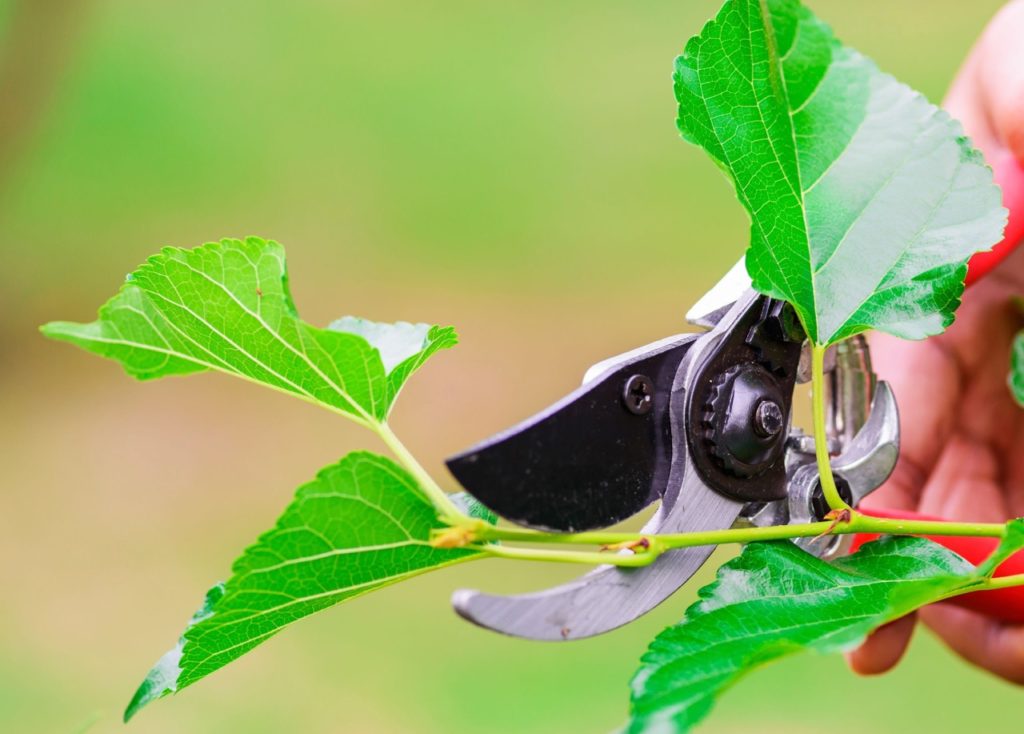
The other option is to take softwood or semi-ripe cuttings in summer, when stems are still mostly green.
Take new green growth, use rooting hormone to improve results if desired, cover with a cloche, and pot up to grow on in a sheltered spot.
Green cuttings tend to root more easily and should be well-rooted within a month or two.
Planting
Mulberry trees work well in a sunny and sheltered spot, either in the middle of a sheltered area or against a south-facing wall.
The care requirements below will help you determine whether you have a suitable spot in your garden, and where exactly to place a mulberry tree within your space.
Mulberry Plant Care
Mulberry trees will not suit all UK gardens.
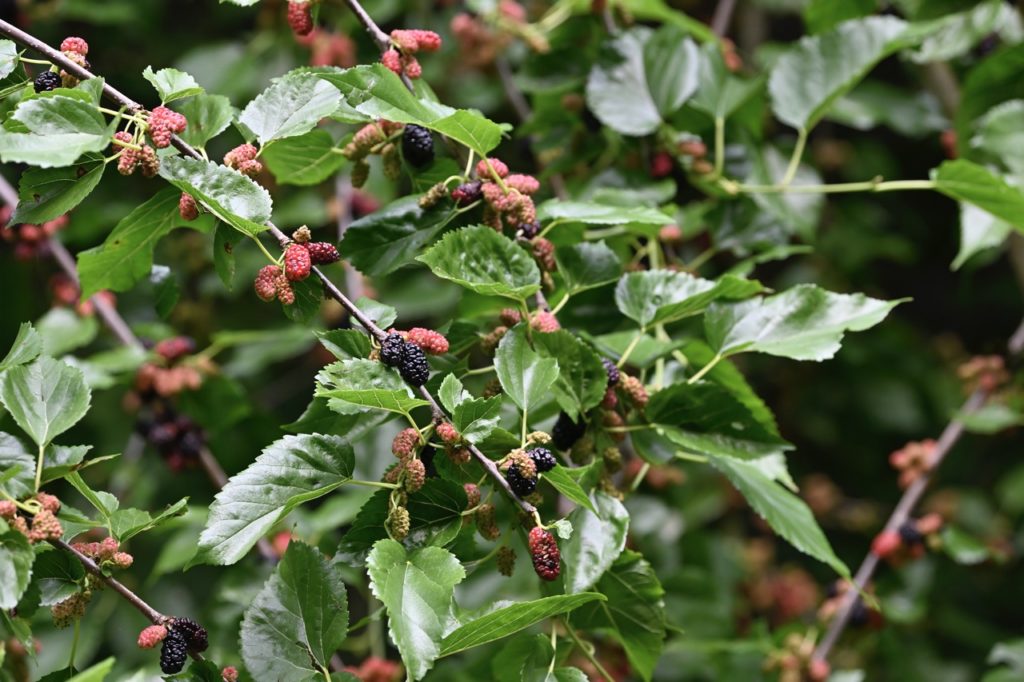
These trees fruit well in the south and south-west but they need the protection of a wall further north for the fruit to ripen successfully.
That said, they are hardy throughout much of the UK, and can theoretically fruit further north when grown in a suitable warm and protected spot.
Preferred Aspect
Mulberries need a sheltered site in full sun.
Although east or west-facing aspects can be suitable, a south-facing aspect is ideal.
Temperature & Climate
Morus nigra trees are H6 hardy, meaning they are able to make it through the winter even when temperatures are between -15-20°C.
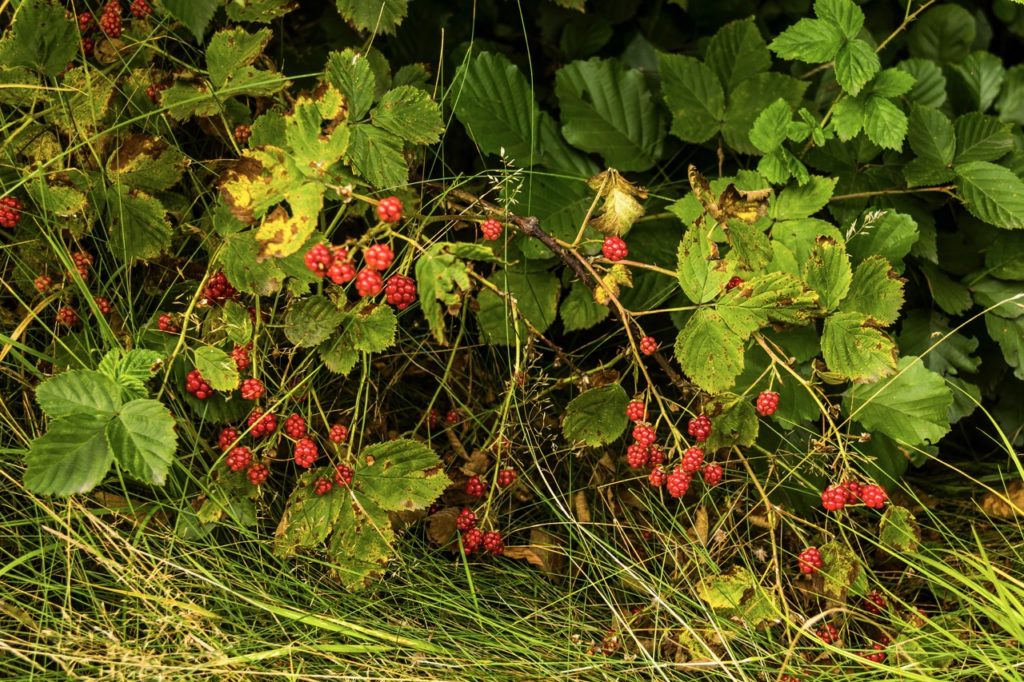
However, it is important that the trees have shelter from dry, cold winds, and as much warmth as possible during the summer for fruits to ripen.
Soil Requirements
Mulberry trees can grow in a range of different soil types and pH is not important, as long as the soil is fertile and rich in organic matter.
The soil must be moist yet free-draining as waterlogged soil will cause issues.
If growing in a container, choose a good loam-based growing medium like John Innes No 2 or equivalent.
Watering
Mulberry trees should be watered well upon planting and during dry periods in their first year of growth.
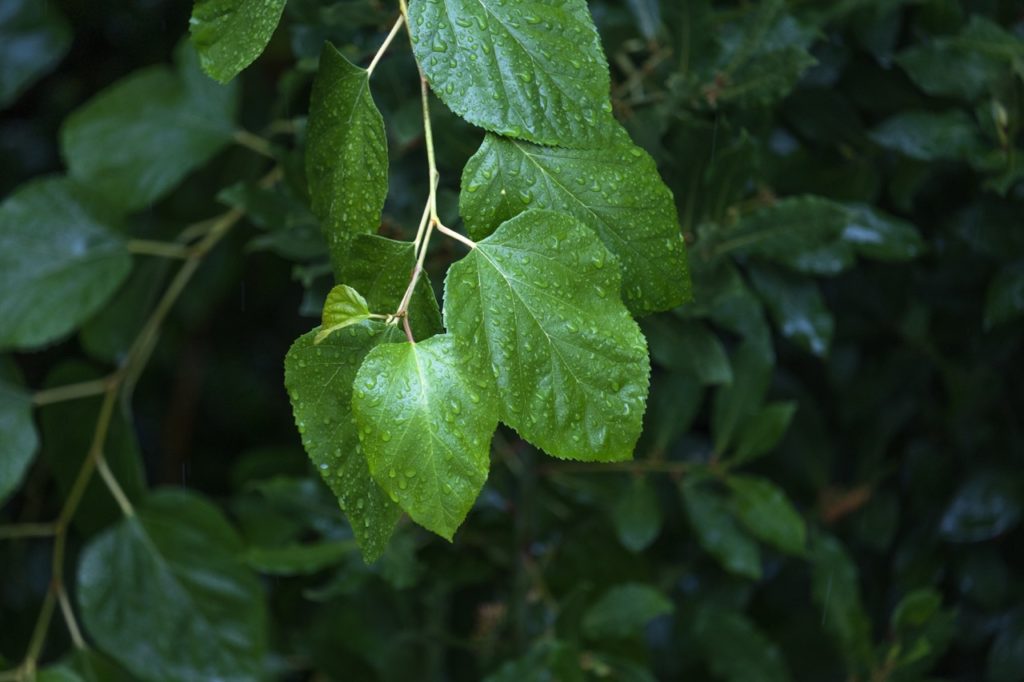
After this, natural rainfall will usually be sufficient for plants growing in the ground.
Container-grown plants should continue to be watered regularly during any dry spells.
Pollination
Mulberry trees are self-fertile, so you will only need to plant one tree for fruit to be produced.
Fertilising
In early spring, it is a good idea to feed a mulberry tree with a high-potassium general organic fertiliser, sprinkling this on the ground around the tree.
Mulching
A good quality organic mulch should also be applied around a mulberry tree upon planting and refreshed each spring.
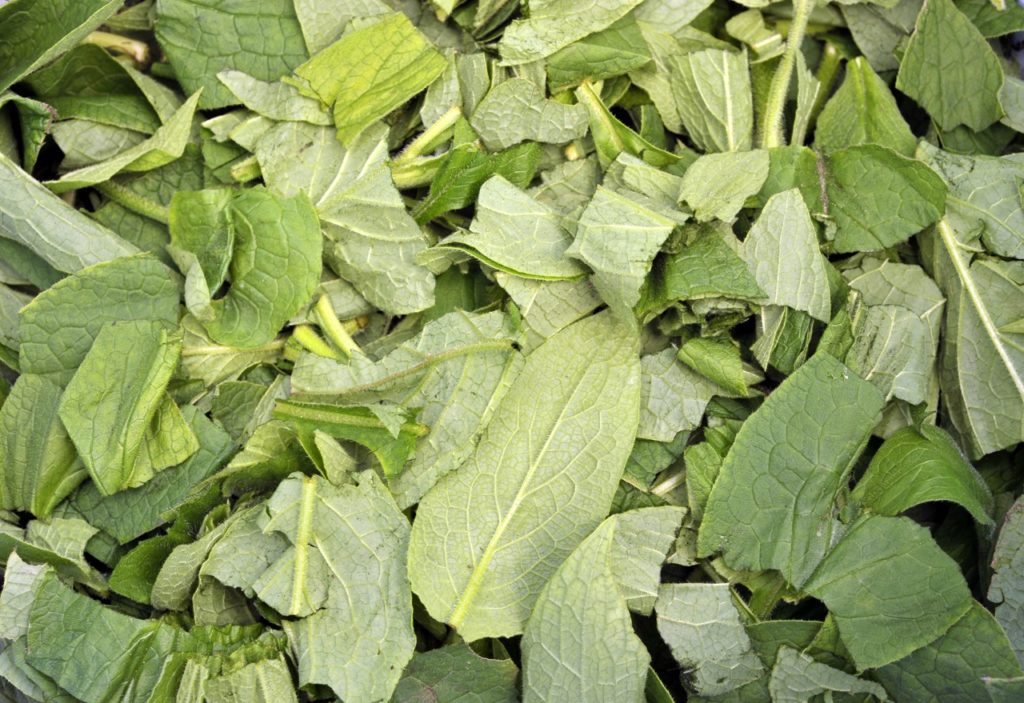
I apply a mulch of homemade compost (enriched with well-rotted chicken manure) in spring, and also mulch with comfrey leaves around my mulberry tree in the summer.
This mulch provides slow-release fertility and also helps with moisture conservation and weed suppression.
Pruning
Mulberries should always be pruned during the dormant period, as they are prone to bleeding sap from cut surfaces.
The ideal time to prune is around a month after the leaves fall.
Firstly, prune to remove any damaged branches or badly placed branches which rub together.
Aim to create a framework of branches for an open canopy.

Mulberry trees are pruned differently if they are standard or half-standard, bush or espaliered forms.
To train as a bush, cut down the leader to around 1.5m in winter, just above some strong side shoots.
Aim to develop a framework of around 8-10 branches.
After this, only minimal pruning will be required.
You can also train mulberries as espalier trees, so they grow flat against a wall.
Common Problems
Mulberries can often be hassle-free, but can be troubled by a number of pests and diseases.
Fungal diseases such as mildew can often cause problems.
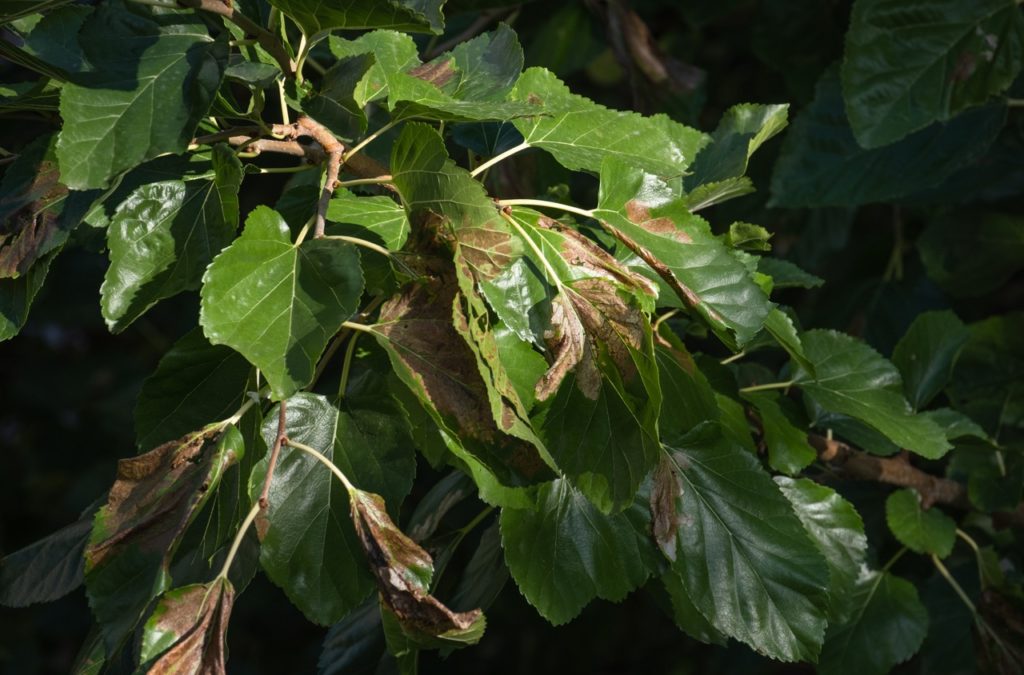
Ensuring good airflow helps reduce the chances of such problems taking hold.
Pest control is best managed holistically.
Like other fruit trees, mulberries will benefit from companion planting and the creation of a guild of beneficial plants that will aid its growth and help in pest control.
Container Growing
As mentioned above, mulberries can be grown as patio trees in large pots or containers.
Fill with a loam-based growing medium that is moist but free-draining.
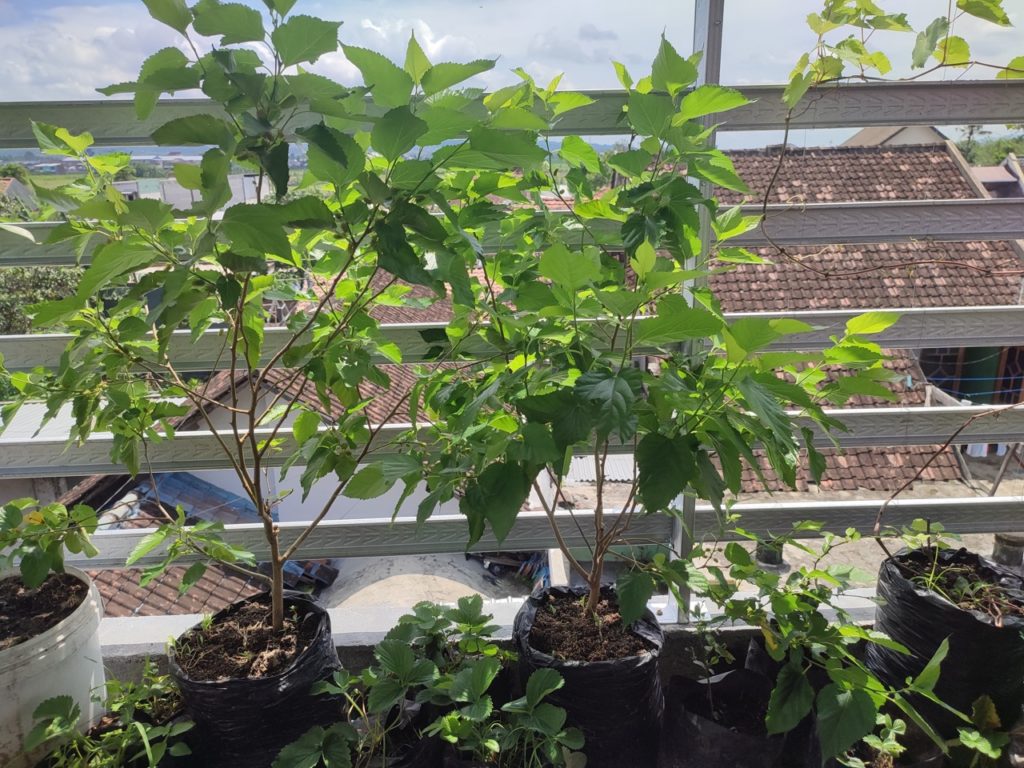
Make sure water can drain freely from the container and water well during dry spells.
Remember that container-grown plants require more watering than those grown in the ground.
Harvesting
Mulberries, once the tree starts to fruit, will turn red in around July before ripening to black in August or September.
Mulberries are gathered by placing a sheet on the ground below the tree and giving branches a shake.
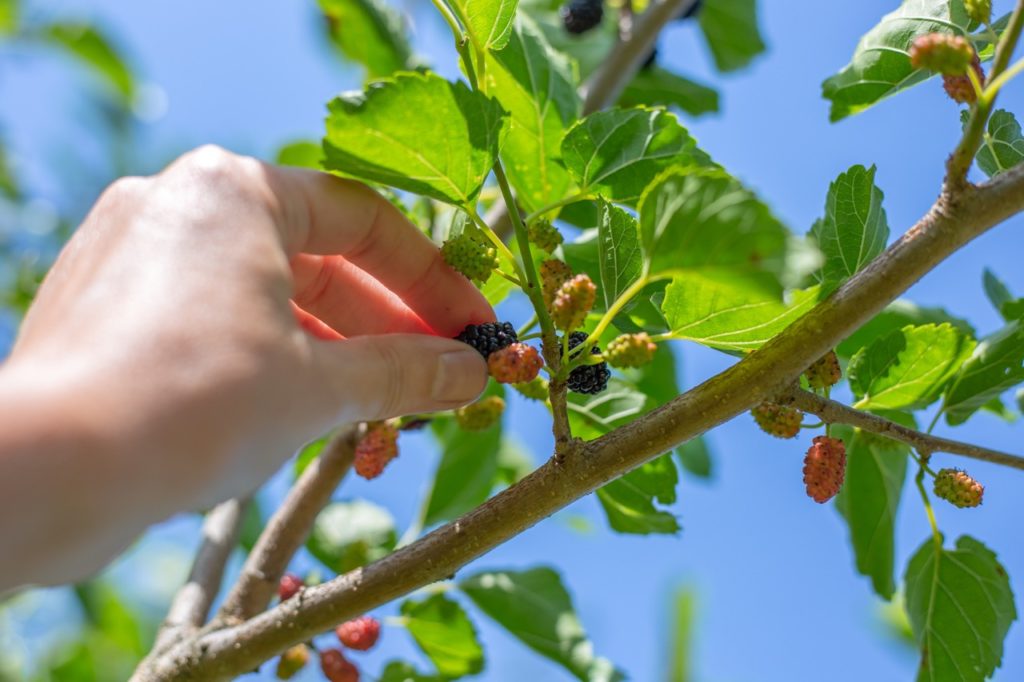
Then, simply gather up the fruits and be prepared to eat or preserve them as soon as possible.
References
- 1Datiles, M. J., & Acevedo-Rodríguez, P. (2015). Morus nigra (black mulberry). CABI Compendium. https://doi.org/10.1079/cabicompendium.34830
- 2Morus nigra Black Mulberry. (n.d.). Plants for a Future. Retrieved March 21, 2023, from https://pfaf.org/user/plant.aspx?latinname=Morus+nigra
